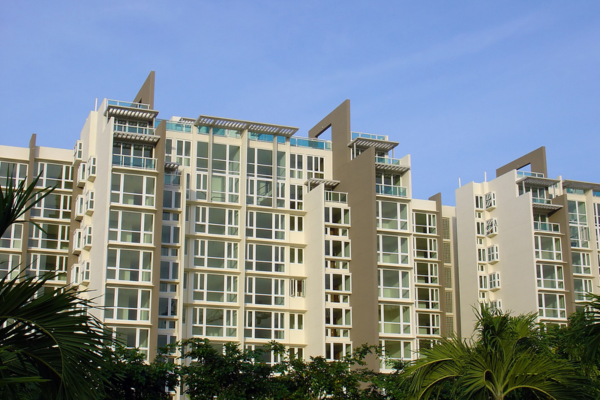
Selling a home is not a quick and easy task. Realistically speaking, it can take approximately four months or more to do so. So what happens if you find your dream home at a reasonable price, but are unable to complete the sale of your existing property in time? Here’s where bridging loans help! In this article, we’ll take you through the process of getting a bridge loan, as well as answer some of your most asked questions.
What are Bridging Loans?
Bridging loans are temporary short-term loans that help you “bridge” the gap between the downpayment for your new property and the sale proceeds from your existing property. It is an interest-only loan, allowing you to use this loan to clear any necessary payments for your new property. This is extremely helpful if you are already at the stage of signing the Sale and Purchase agreement for your new home. At this stage, you would have to immediately pay the downpayment. With the bridging loan, you will be able to use the loan to fund your property’s downpayment and other necessary fees.
What are the different types of Bridging Loans?
There are two types of bridging loans – Capitalised Interest and Simultaneous Repayment Bridging Loan.
1. Capitalised Interest Bridging Loan
Under this bridging loan, the whole cost of your new home will be covered by the bridging loan. You will avoid paying for both your current home’s mortgage and the bridging loan, as repayments for the capitalised interest bridging loan only starts after the sale of your existing property. The interest you accrue will be added to your principal amount, and you will have to make a lump sum payment of the amount at the end of the loan term.
This is better for those who do not want to take on the heavy financial burden of balancing both payments at the same time.
2. Simultaneous Repayment Bridging Loan
The simultaneous repayment bridging loan is the complete opposite of a capitalised interest bridging loan. Under this loan structure, you would have to pay back the principal and interest payment simultaneously throughout the loan term. Of course, you may face higher levels of financial burden. However, this also means that you would get to enjoy lower interest charges.
If this still sounds confusing to you, don’t worry! In Singapore, regardless of which bridging loan you decide to take, it is mandated that they have to be paid back within 6 months.
Many Singapore banks offer bridging loans with varying packages. For example, DBS’s bridging loan is pegged to the DBS Prime Rate, currently standing at 4.25% p.a.. In addition, there is no lock-in period. Standard Chartered’s HDB bridging loan is pegged to the 3-month SORA rate + 2.50% p.a.. This, however, only applies to HDB property.
You can also apply for bridging loans from licensed money lenders. A full list of licensed money lenders can be found here. The interest rates licensed money lenders charge are capped at 4% p.a.. Licensed money lenders often have less stringent eligibility requirements, making it the preferred choice for some.

Who is eligible for a bridging loan?
Singapore Citizens and Permanent Residents above the age of 21 years old are eligible to apply for a bridging loan. The bridging loan amount you can receive depends on the CPF expected to be returned or expected cash proceeds from the sale of your current property. The bridging loan will cover the balance amount you require beyond the LTV limit. The current LTV limit set by MAS for bank loans is 75%, while the LTV limit for HDB loans is 80%.
This means that you will be able to borrow up to 24% of the purchase price for your new property. For instance, if your new property costs S$1 million, and the LTV limit is 75%, the bank will only lend you a maximum of S$750,000. The remaining S$240,000 (24%) will be covered by the bridging loan. The bank will not be able to bridge the first 1% deposit that you will need to have at least to place an Option to Purchase.
How do I apply for a bridging loan?
Applying for a bridging loan is relatively much more straightforward than applying for any other loan. The process will only take you a few days and can even be completed in 1 day. Generally, all banks follow similar procedures, but make sure you do your due diligence before committing to one, as there may be specific requirements mandated by some banks.
Along with the application form, documents that have to be submitted vary according to the property type. If your existing property is an HDB, you will have to submit your latest CPF withdrawal statement, option to purchase for the existing property, account statement from your existing bank/HDB showing the latest loan balance, and several letters from HDB, together with the caveat lodged on the existing property.
If your existing property is a private property, you are required to submit the duly exercised option to purchase and latest CPF withdrawal statement for your existing property, account statement showing your latest loan balance, exercise letter from the buyer’s lawyer, and the caveat lodged on the existing property.

Are there any extra fees applicable to me?
Generally, you are not subject to any processing fees, or pre-payment and cancellation fees, though this may differ from bank to bank. There may however, be additional legal fees imposed by your law firm. A default fee of 2% on the overdue amount will be charged in addition to regular interest if you default on your loan. In addition, late payment fees ranging from 3% to 5% may also apply, depending on your chosen bank.
We hope that the concept of a bridging loan feels less foreign to you. Whether you choose to take on a bridging loan from a bank, a licensed money lender, or not take it at all, make sure you do more research and seek professional advice before committing to anything – after all, this is a big-ticket purchase!
Want to find the best mortgage rate in town? Check out our free comparison service to learn more!
Read more of our posts below!

